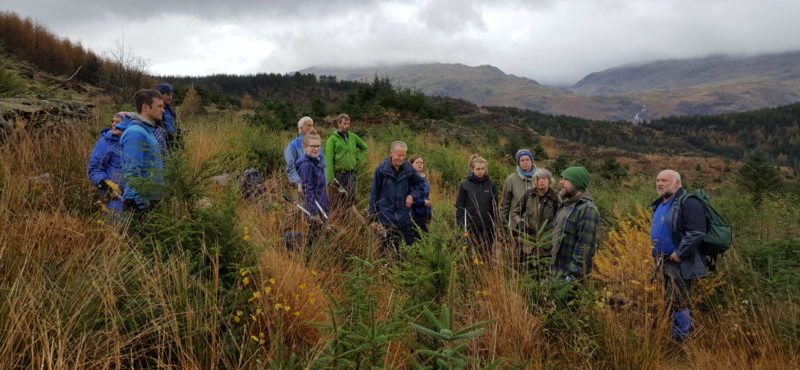Capturing carbon through UK woodlands
Nature-based solutions
Trees are a key part of the UK’s plans to achieve net zero and one of the most promising ‘technologies’ currently available to remove carbon dioxide from the atmosphere. Whilst they do not negate the need to cut emissions drastically, trees can play an important role in counter-balancing emissions from hard to decarbonise sectors, such as aviation, farming and certain heavy industries.
The UK Committee on Climate Change has advised that to reach net zero by 2050 the UK must plant or restore 30,000 – 50,000 hectares of forest per year, sequestering 15 – 20 million tonnes of carbon dioxide. However, the average rate of afforestation between 2015 and 2019 was five times lower than that now required.
The UK government has started to make major commitments to afforestation through a variety of policy levers including funding, plans for large scale planting programmes and subsidy reform. Despite these positive signs, afforestation on the scales required to meet net zero targets is far from guaranteed.
We want to make sure UK woodlands achieve the maximum possible benefit for people and wildlife.
A number of challenges remain, relating to both the science and the practicalities of afforestation. For example, it is not completely clear how much carbon different types of new woodlands remove from the atmosphere, or how their ability to store carbon will be affected by future changes in climate. There are also significant social and economic barriers to land use change that must be addressed whilst maximising co-benefits from tree planting, such as flood management, biodiversity gains and improved human wellbeing through access to green spaces.
Northern forest projects
University of Leeds researchers are working to address multiple challenges facing afforestation.
Led by Professor Dominick Spracklen, the Restoring Hardknott Forest project involves a partnership with Forestry England to restore a 630 hectare forest plantation into native woodland in the Lake District National Park.
 Volunteers at Hardknott Forest
Volunteers at Hardknott Forest
Since starting in 2003, the research has helped to quantify the amount of carbon dioxide that native woodlands can capture and store, as well as understanding how forests can regenerate naturally.
Leeds researchers are conducting long-term monitoring of the forest, providing vital data on how natural processes can restore forests without the need for tree planting. Crucially, this work informs the way the forest is managed, ensuring that decisions are guided by the latest research.
In another partnership, researchers led by Dr Cat Scott are working with local authorities in West and North Yorkshire to explore the potential for tree planting to help achieve their net zero targets. Collectively the area is known as the White Rose Forest – a local authority based Community Forest Partnership involving the Forestry Commission, the Woodland Trust, and many other stakeholders.
The researchers are producing estimates that will help local authorities understand the extent to which new woodland creation in their region could capture carbon. To do this they are combining scientific data on tree growth from Forest Research, with the UK’s Woodland Carbon Code. Their modelling is also being used to look at the amount of carbon being taken up by trees outside of woodlands, for example in urban areas.
Dr Cat Scott said: “Key to the success of these projects are our close partnerships with local authorities, community groups, landowners and forestry organisations.”
Professor Dominick Spracklen added: “We want to make sure UK woodlands achieve the maximum possible benefit for people and wildlife. This means not only expanding woodland coverage, but ensuring that many of these woodlands are accessible to communities and resilient to future climate changes.”
What next?
- To help the UK reach net zero, the Committee on Climate Change suggests that UK woodland cover will need to increase from the present 13% to 19% of land by 2050. For comparison, the EU average is around 35%.
- Increasing UK woodland presents both challenges and opportunities. Success will require new and innovative partnerships between landowners, local and national government, charities, businesses and community organisations.
- Professor Spracklen and Dr Scott both welcome enquiries from organisations looking for support with afforestation.
